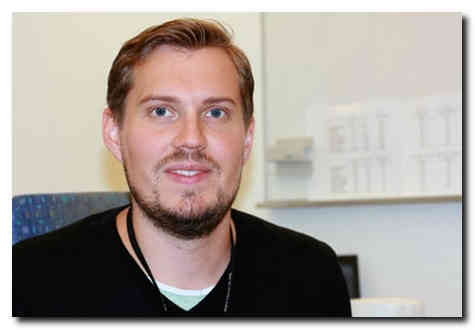Lower grammages significantly changes the behaviour of the drying rate and air flow during tissue production. This was pointed out in a new Licentiate thesis presented by Aron Tysén on 30 September at Karlstad University.

The removal of water is an integral part of tissue production. Through air drying (TAD) is used for premium tissue grade products. This process provides both better absorption and bulk compared to traditional dewatering by pressing, but is very energy intensive. A better understanding of the TAD process may lower energy demand.
Aron Tysén has in his licentiate work at Innventia investigated the influence of grammage, formation, i.e. variation in local grammage, and pulp type on non-uniform drying and air flow through the sheet. A method was developed, based on infrared thermography, to determine local drying time of laboratory sheets on a sub mm-scale, while monitoring air flow and pressure drop of the TAD process. Modified permeability, i.e. the air flow through the fibre network at a given grammage, was used to evaluate air flow characteristics.
The results from the studies presented in the thesis "Through air drying - The influence of formation and pulp type on non-uniform drying and air flow" show, somewhat unexpectedly, that neither the pulp type, nor the formation has much influence on the drying rate and the non-uniformity of drying. Grammage, however, seems to play a crucial role. For low grammages, only small mass-specific drying rate variations between the sheets were noted. For higher grammages, however, the mass-specific drying rate became dependent on the modified permeability to an increasing extent, suggesting a change in drying mechanisms with grammage.
"This implies that TAD at low grammages would not benefit from high through air flows. It might be better to have a longer drying section with less air flow, allowing saturation of the drying air", says Aron Tysén.
The Licentiate degree was the first milestone towards a PhD degree. For Aron's further studies, many avenues are possible with the developed technique. For instance a closer look at the influence of the TAD wire design on the local drying times, which would be possible with the high resolution obtained with the thermographic method.
"The methodology developed by Aron has shown that thermography can be used to calculate the drying rate. In the next step, it would also be possible to match the drying time maps against other measurements such as grammage maps which could lead to greater understanding of connections between, for instance, grammage variations, moisture variations, and local drying times, says Hannes Vomhoff who has been Aron's supervisor at Innventia.
For more information, contact
Aron Tysen, tel. +46 768 767497, This email address is being protected from spambots. You need JavaScript enabled to view it.
Hannes Vomhoff, tel. +46 768 767488, This email address is being protected from spambots. You need JavaScript enabled to view it.
This study was performed as part of the Industrial Graduate School VIPP (Values Created in Fiber Based Processes and Products) at Karlstad University, with the financial support of the Knowledge Foundation.
